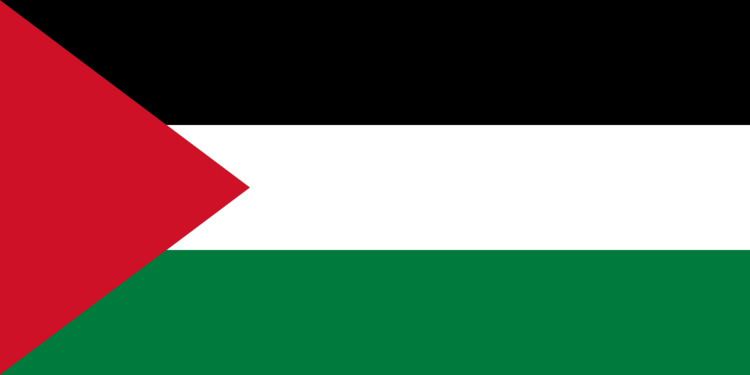 | ||
This article is about the demographic features of the population of the area which is commonly described as Palestinian territories and includes information on ethnicity, education level, health of the populous, economic status, religious affiliations and other aspects of that population.
Contents
- Overview
- UN estimates
- Demographics of the West Bank
- Population
- Age structure
- Population growth rate
- Birth rate
- Mortality rate
- Net migration rate
- Sex ratio
- Infant mortality rate
- Life expectancy at birth
- Total fertility rate
- Nationality
- Ethnic groups
- Religions
- Languages
- Literacy
- Demographics of the Gaza Strip
- References
According to a commonly used definition as relating to an application of the 1949 Armistice Agreement green line, the Palestinian territories have contributory parts of the West Bank (including East Jerusalem) and the Gaza Strip. While the Palestinian National Authority, the United Nations Security Council, the United Nations General Assembly, the European Union, the International Court of Justice, and the International Committee of the Red Cross use the terminology "Palestinian territories" or "occupied Palestinian territories", Israel have preferred alternative terminology.
Overview
The Palestinian Central Bureau of Statistics (PCBS) estimated that the Palestinian population between the Jordan River and the Mediterranean, inclusive of the West Bank, the Gaza Strip and Israel, amounted to 6.08 million people in 2014. Israeli statistics come to an approximately similar figure, counting 1,719,000 Arab citizens (inclusive of 140,000 Druze, and other Arabic-speaking groups not self-identifying as Palestinian/Arab), 2.754 million West Bank Palestinians, and 1.73 million Gazan Palestinians, which translates into the comprehensive figure of approximately 6.2 million.
At mid-year 2009 as 10.7 million persons as follows: 3.9 million in the Palestinian territories (36.6%), 1.2 million (11.5%) in Israel; 5.0 million in Arab countries (46.2%), 0.6 million in foreign countries (5.7%).
According to a 2008 article in The Guardian, using PCBS census figures, the Palestinian territories have one of the fastest growing populations in the world, with numbers surging 30% in the past decade (2008). There were 3.76 million Palestinians in the West Bank, Gaza and East Jerusalem, up from 2.89 million 10 years earlier.
According to the U.S. Census, population growth mid-1990-2008 in Gaza and West Bank was 106% from 1.9 million (1990) to 3.9 million persons.
According to the United Nations, the Palestinian population was 4.4 million in 2010. According to the PCBS, population density in 2009 was 654 capita/km2, of which 433 capita/km2 in the West Bank including Jerusalem and 4,073 capita/km2 in Gaza Strip. In the mid-2009, the share of population less than 15 years was 41.9% and above 65 years 3%.
UN estimates
Births and deaths
Demographics of the West Bank
The following demographic statistics are from the CIA World Factbook, unless otherwise indicated.
Population
2,731,052 (July 2014 est.) including East Jerusalem population in the West Bank, including Jews. 83% of the population is Palestinian Arab, 17% is Jewish.
Age structure
0–14 years: 33.7% (male 472,476/female 448,078)
15–24 years: 21.7% (male 303,578/female 289,119)
25–54 years: 36.4% (male 511,443/female 483,276)
55–64 years: 3.8% (male 59,762/female 59,372)
65 years and over: 3.8% (male 43,629/female 60,315) (2014 est.)
Population growth rate
1.99% (2014 est.)
Birth rate
24.56 births/1,000 population (2011 est.)
Mortality rate
3.51 deaths/1,000 population (2014 est.)
Net migration rate
0 migrant(s)/1,000 population (2008 est.)
Sex ratio
at birth: 1.06 male(s)/female
under 15 years: 1.05 male(s)/female
15–64 years: 1.05 male(s)/female
65 years and over: 0.71 male(s)/female
total population: 1.04 male(s)/female (2011 est.)
Infant mortality rate
total: 14.92 deaths/1,000 live births
male: 16.73 deaths/1,000 live births
female: 13.01 deaths/1,000 live births (2011 est.)
Life expectancy at birth
total population: 75.01 years
male: 72.97 years
female: 77.17 years (2011 est.)
Total fertility rate
2.83 children born/woman (2014 est.)
Nationality
noun: Arabs: Palestinian
Ethnic groups
Arab (Palestinian): 83%
Israeli Jewish and other: 17%
Religions
Muslim 80–85% (predominantly Sunni; also non-denominational), Christian 1.0–2.5%, Jewish 12–14%
Languages
Arabic language, English language (compulsory in schools, widely spoken by Palestinians), Hebrew language (spoken by Israeli Jews in the West Bank, and spoken by many Palestinians)
Literacy
definition: age 15 and over can read and write
total population: 92.4%
male: 96.7%
female: 88% (2011 est.)
Demographics of the Gaza Strip
The following demographic statistics come from the CIA World Factbook, unless otherwise indicated.
Population
1,816,379 (July 2014 est.)
Age structure
0–14 years: 44.7% (male 343,988/female 325,856)
15–64 years: 52.7% (male 403,855/female 386,681)
65 years and over: 2.7% (male 16,196/female 23,626) (2008 est.)
Population growth rate
3.422% (2008 est.)
Birth rate
39.45 births/1,000 population (2006 est.)
Mortality rate
3.8 deaths/1,000 population (2006 est.)
Net migration rate
0 migrant(s)/1,000 population (2008 est.)
Sex ratio
at birth: 1.05 male(s)/female
under 15 years: 1.05 male(s)/female
15–64 years: 1.04 male(s)/female
65 years and over: 0.71 male(s)/female
total population: 1.04 male(s)/female (2006 est.)
Infant mortality rate
total population: 22.4/1,000 live births
male: 23.48/1,000 live births
female: 21.27/1,000 live births (2006 est.)
Life expectancy at birth
total population: 71.97 years
male: 70.67 years
female: 73.34 years (2006 est.)
Total fertility rate
4.18 children born/woman (2013 est.)
Nationality
noun: Palestinians
adjective: Palestinian
Ethnic groups
Arab (Palestinian) 98.7%
Religions
Muslim 98–99 % (predominantly Sunni), Christian 0.7%
Languages
Arabic, Hebrew (spoken by many Palestinians), English (widely understood)
Literacy
definition: age 15 and over can read and write
total population: 91.9%
male: 96.3%
female: 87.4% (2003 est.)
